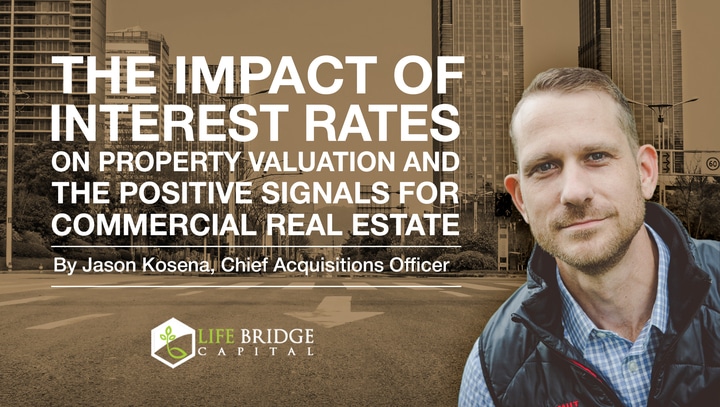Apartment buildings remain a popular investment for those hoping to make money on multifamily buildings, thanks to the regular stream of revenue provided by multiple tenants. When getting into the apartment building market, it’s important to understand that there are multiple types of apartment buildings to choose from. To help you decide which is the right investment for you, here’s a quick overview of the types of apartment buildings based on structure and size.
Life Bridge Capital is a leading real estate syndication company. We offer our investment partners the opportunity to leverage shares of multifamily rental properties into a passive monthly income. Learn More
Low-Rise Apartment Buildings
Buildings with four or fewer levels are considered low-rise apartment buildings. These size classifications come from height rather than number of units or other size factors. So, regardless of whether the building has 4 units or 40, it will still be considered a low-rise building as long as it has no more than 4 levels.
Low-rise apartment buildings encompass more than just the typical enclosed apartment building. They also include townhomes, duplexes, garden-style homes, row houses, and single-story multiplexes. You’ll most often see low-rise apartments in suburban areas or areas with lower populations.
Pros of Low-Rise Apartment Buildings for Investors
These types of apartment buildings often have the lowest cost to enter the market. Given that they usually have fewer units and amenities to manage, it would be a good project for an investor/landlord to take on if they want to do it all themselves rather than hire a property manager.
Cons of Low-Rise Apartment Buildings for Investors
Because fewer units are involved, low-rise properties usually have less income potential. These buildings are less likely to fall into the luxury category and generally have fewer amenities. This further reduces the ability to mark up rent and earn more per unit.
Mid-Rise Apartment Buildings
Apartment buildings classified as mid-rise have between 5 and 9 levels and are popular in both suburban and urban areas. You will commonly find these buildings in mixed-use areas near popular shopping, retail, and entertainment areas.
In addition to the traditional apartment building, mid-rise buildings may include university dormitories and some income-restricted or senior citizen complexes.
Pros of Mid-Rise Apartment Buildings for Investors
Mid-rise apartment buildings offer a better return for the parcel of land than low-rise buildings. These buildings have increased in popularity with young people and families as home-ownership becomes more challenging and less appealing. Because of this, there are many opportunities for land purchase and project development due to high demand.
Cons of Mid-Rise Apartment Buildings for Investors
In some areas, competition from other buildings will be intense. This can limit possible rents and place scrutiny on amenities and the condition of the property from prospective tenants.
High-Rise Apartment Buildings
Buildings over nine levels meet the high-rise designation. These properties maximize use of each square foot of land, giving investors the ability to earn the most cash coming in from rent collection. These buildings are most likely to be in city centers or in other high-density areas.
Pros of High-Rise Apartment Buildings for Investors
High-rise apartment buildings can yield significant income, especially if the top floors are dedicated to luxury penthouses. The high volume of tenants ensures regular cash flow.
Cons of High-Rise Apartment Buildings for Investors
High-rise apartments offer a lot of risk to go with the possible reward. Construction is more challenging and expensive and may be subject to burdensome local regulations regarding parking and natural disaster mitigation. Property management responsibilities will also be more significant with the greater number of units.
Multi-Use Apartment Buildings
Buildings that house residential living space along with retail or commercial space receive the multi-use building label regardless of size. We most commonly see these types of buildings in a vertical format with shops and office space on the first few floors and residential units on the upper levels.
Horizontal multi-use buildings also have this mixture of uses, but most of their space is horizontal rather than vertical. This format where retail is at one end or section and residential is at another is a popular solution to mall complexes where anchor stores have exited and are replaced with residential units. Horizontal multi-use buildings can be more than one level but occupy more horizontal space than vertical.
Pros of Multi-Use Apartment Buildings for Investors
These types of apartment buildings often have the lowest cost to enter the market. Given that they usually have fewer units and amenities to manage, it could be a good project for an investor/landlord to take on if they want to do it all themselves rather than hire a property manager.
Cons of Multi-Use Apartment Buildings for Investors
Multi-use apartment buildings can be particularly susceptible to economic downturn. If the retail units are not sufficiently filled, it can be challenging to retain or obtain tenants.
Other Types of Apartment Buildings
In addition to structure size, apartment buildings can also be typified by other unit characteristics:
- Large apartments are characterized by units with three or more bedrooms.
- Medium apartments have one or two bedrooms.
- Penthouse apartments take up large portions, if not all, of upper floors of buildings. These are considered luxury units.
- Single-room occupancy units lack their own bathroom or kitchen and usually share those areas in common with other SROs.
- Studio apartments are two rooms, with one being a combination living area/kitchen/bedroom and the other being a bathroom.
Final Thoughts
The many types of apartment buildings provide investment opportunities across a variety of budgets and experience levels. If investing in an apartment building seems interesting to you, consider real estate syndication. Investing through a syndicate allows you to participate in a larger deal than you may not otherwise be able to on your own due to limited funds. Another great advantage of a real estate syndication is that the sponsor handles all of the property management, renovations, rent collection and property sale aspects, while individual investors can enjoy regular passive income.
Life Bridge Capital is a leading real estate syndication company. We offer our investment partners the opportunity to leverage shares of multifamily rental properties into a passive monthly income. Learn More


